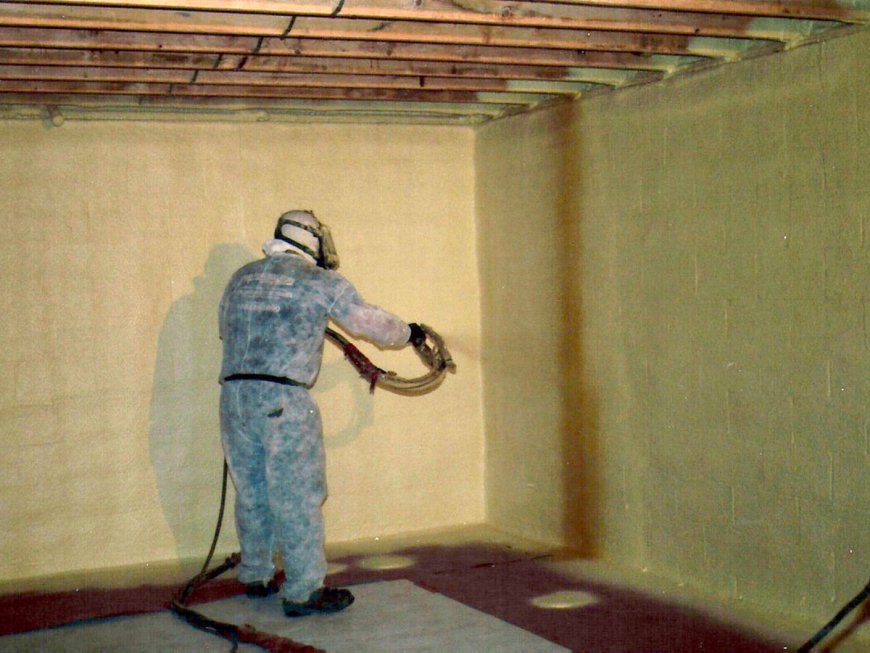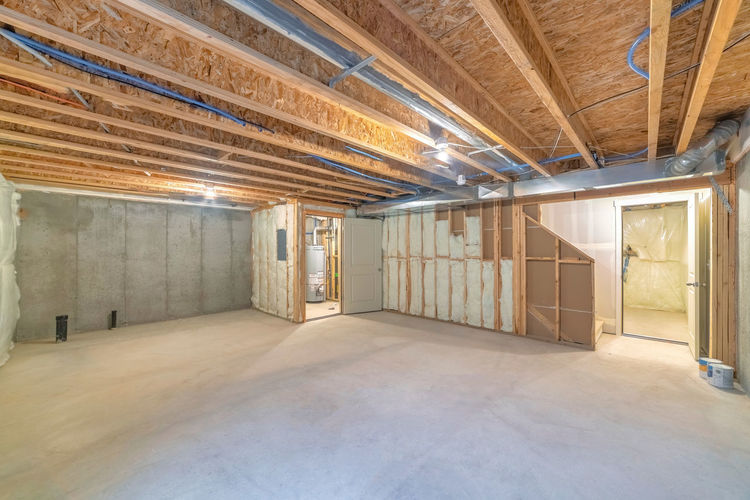When to Upgrade Basement Insulation for Moisture Control
Basements are often the first place where moisture problems show up.

Basements are often the first place where moisture problems show up. Poor insulation and the wrong materials can make the issue worse, especially if damp air is trapped between wall surfaces or if condensation builds up behind insulation layers. Over time, this can lead to mold, rot, and rising energy costs.
This article explains when and why upgrading basement insulation for moisture control becomes necessary. Whether you're dealing with finished or unfinished basements, this guide outlines what to look for, how to assess insulation performance, and which upgrades help you maintain a dry, energy-efficient, and durable basement environment.
Signs Its Time to Upgrade Your Basement Insulation
Knowing when your current insulation is no longer effective is key to managing indoor moisture levels. Certain symptoms point to compromised materials or faulty installation.
Persistent Musty Odors and Damp Air
Musty smells often signal microbial growth. If you notice odors even after cleaning or ventilating, its possible the insulation is retaining moisture.
-
Odors may originate behind finished walls
-
Mold-resistant insulation is often lacking in older installations
-
Water vapor buildup behind drywall can feed mold colonies
Visible Mold or Discoloration
Mold growth near baseboards, corners, or behind insulation panels is a clear sign of trapped moisture.
-
Mold stains are common in fiberglass batts installed without vapor barriers
-
Wall insulation in contact with cold surfaces may lead to condensation
-
Mold often appears where air cant circulate freely
Peeling Paint or Warped Wall Panels
Paint bubbling, drywall warping, or efflorescence (white powdery deposits) on masonry walls point to moisture penetration.
-
Interior basement wall insulation systems may have failed vapor protection
-
Water may be entering through foundation cracks or porous materials
-
Poor air sealing can let warm, humid air meet cold surfaces, forming moisture
Moisture Behavior Below Grade
Understanding how moisture behaves below grade is key to identifying which materials and methods work best.
Capillary Action and Foundation Walls
Moisture wicks up from the ground through concrete or masonry walls via capillary action, which can saturate lower wall sections.
-
Unsealed foundation walls can pull water into insulation layers
-
Use of rigid foam insulation directly on walls can block this movement
-
Vapor retarders are essential in cold and mixed climates
Warm Interior Meets Cold Wall
Basements are often cooler than the rest of the house. When warm interior air contacts a cold wall surface, condensation forms.
-
Condensation leads to wet insulation and organic material breakdown
-
Insulating directly on masonry without a thermal break can worsen this
-
Closed-cell spray foam offers both insulation and air/moisture control
Types of Basement Insulation for Moisture Control
The material you choose directly affects both thermal performance and moisture management. Below are options evaluated for below-grade use.
Closed-Cell Spray Foam
Spray foam insulation bonds to the wall surface and creates a continuous air and vapor barrier.
-
R-value of ~6.5 per inch
-
Controls both temperature and moisture movement
-
Requires professional installation but delivers high performance
Rigid Foam Panels
Extruded polystyrene (XPS) or polyisocyanurate panels resist moisture and can be applied directly to foundation walls.
-
Typically paired with sealed seams and air barriers
-
Better suited for unfinished or retrofitted basements
-
Water-resistant insulation that avoids mold growth
Mineral Wool
While not fully water-resistant, mineral wool does not absorb water and resists mold, making it safer than fiberglass in damp environments.
-
Often used in basement framing cavities
-
Must be paired with a separate vapor control layer
-
Moderate R-value but effective for soundproofing and fire resistance
Outdated Fiberglass Batts
Fiberglass batts are still found in older basements but perform poorly in moist conditions.
-
Absorb moisture and collapse over time
-
Organic paper backing supports mold growth
-
Often installed without proper vapor control
Summary Table: Moisture-Resistant Basement Insulation Options
|
Material |
Water Resistance |
R-Value (per inch) |
Best Use Case |
|---|---|---|---|
|
Closed-Cell Spray Foam |
High |
~6.5 |
Finished or sealed wall assemblies |
|
Rigid Foam Board |
High |
4.56 |
Interior basement wall applications |
|
Mineral Wool |
Moderate |
~4 |
Framing cavities with vapor control |
|
Fiberglass Batts |
Low |
~3.5 |
Not recommended for damp basements |
When to Prioritize Insulation Upgrades
Not all homes need immediate insulation upgrades, but certain scenarios call for prompt action.
Remodeling or Finishing a Basement
Before adding drywall, flooring, or ceiling finishes, inspect the insulation. Retrofitting after finishing is far more difficult and costly.
-
Look for non-permeable insulation systems
-
Prioritize air sealing along rim joists and foundation edges
-
Add vapor barriers or spray foam where needed
After Flooding or Water Intrusion
Basements affected by water damage should not retain previous insulation. Even if materials seem dry, they may hide contamination or degradation.
-
Remove and replace compromised insulation
-
Improve drainage, sump pump systems, and sealing
-
Use water-resistant, mold-inhibiting insulation for rebuilds
Energy Efficiency Upgrades
Older homes with unfinished basements often lose a substantial portion of heat through below-grade walls.
-
Insulating basement walls can save 1020% on heating costs
-
Upgrade insulation if your energy bills are higher than expected
-
Use tools like infrared imaging to locate thermal gaps
Common Questions
Should basement walls be insulated from the inside or outside?
Interior insulation is more common and cost-effective, but exterior insulation during new construction can prevent moisture from reaching the wall. Interior upgrades must include moisture control features to avoid trapping condensation.
Is a vapor barrier always needed in basement insulation?
In most cold or mixed climates, yes. A vapor barrier (or vapor-retarding insulation like closed-cell spray foam) helps prevent warm indoor air from condensing on cold basement walls.
Can I reuse insulation after a basement flood?
No. Once insulation gets wet, especially fiberglass or cellulose, it should be removed. These materials lose R-value and may harbor mold, even after drying.
How do I insulate a basement without causing mold?
Use non-absorbent insulation, such as closed-cell spray foam or rigid foam board. Combine it with air sealing and moisture control strategies, including perimeter drainage and vapor barriers.
Conclusion
Upgrading basement insulation is often about more than comfort or energy savingsits about preventing moisture buildup, structural damage, and long-term indoor air quality issues. Moisture-resistant materials, smart vapor control, and proper installation practices form the foundation of effective below-grade insulation.
If you notice damp air, surface discoloration, or rising utility bills, it may be time to review your basement's insulation system. Working with a Spray Foam Insulation company helps evaluate how insulation interacts with the building envelope, temperature differences, and water sourcesallowing you to make smarter decisions that contribute to a dry, efficient, and healthy space.
FAQs
What insulation works best for damp basements? Closed-cell spray foam and rigid foam boards are the best options. They resist water, maintain their R-value, and prevent mold and mildew growth.
How do I stop condensation behind basement walls? Use insulation materials that include vapor retarders. Ensure walls are sealed against air leaks and that indoor humidity is kept under control with dehumidifiers or ventilation.
Is mold in insulation dangerous? Yes. Mold can damage insulation materials and negatively impact indoor air quality. Always remove and replace insulation affected by mold.
Does better basement insulation help with heating bills? Yes. Insulating below-grade walls reduces heat loss, especially in colder regions. The result is more stable indoor temperatures and lower energy use.
Can I install basement insulation myself? It depends. While rigid foam panels are DIY-friendly, spray foam requires professional application. Make sure to follow local building codes and moisture control best practices.
Reviewer: With nearly a decade in the spray foam insulation field, William Harris reviewed this post and provided guidance that reflects both technical understanding and real-world marketing experience






































